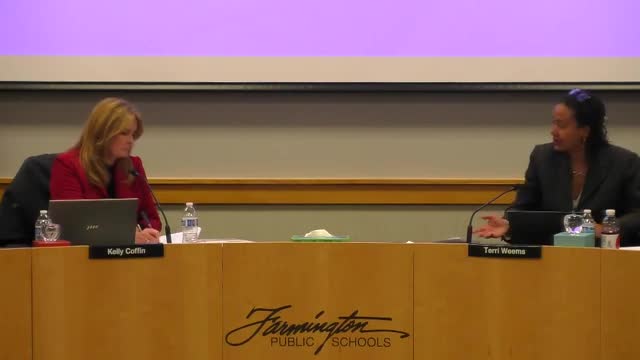Farmington Schools approve structured cabling upgrades for elementary and high schools
May 01, 2025 | Farmington Public School District, School Boards, Michigan
Thanks to Scribe from Workplace AI , all articles about Michigan are free for you to enjoy throughout 2025!

This article was created by AI using a video recording of the meeting. It summarizes the key points discussed, but for full details and context, please refer to the video of the full meeting. Link to Full Meeting
One of the main highlights was a presentation by Amy Sassina from Plant Moran and Wes Prescott, the district's technology director, regarding a structured cabling proposal essential for upgrading the district's technology systems. The current cabling, some of which is over 20 years old, is critical for internet connectivity and overall technological stability in the schools.

Before you scroll further...
Get access to the words and decisions of your elected officials for free!
Subscribe for FreeThe proposal includes replacing outdated cabling in all elementary schools, the STEAM Academy, Farmington Central High School, and the Transportation and Facilities buildings. The district received five bids for the project, ultimately recommending CIT, a vendor already familiar with the district's needs. The work is scheduled to take place over the summer to minimize disruption to summer programming, with some tasks extending into the school year for the Transportation and Facilities buildings.
The new cabling will consist of Category 6 data cables, which are the current standard, replacing the older Category 5 and 5e cables. Additionally, fiber optics between wiring closets will be updated, enhancing the district's capacity to support new technologies and increased bandwidth demands.
The board discussed the financial implications of the project, noting that the district would utilize E-rate funding to recover 50% of the costs. This strategic approach allows the district to maximize funding opportunities while ensuring that the necessary upgrades are made in a timely manner.
In conclusion, the meeting underscored the district's commitment to improving its technological infrastructure, with plans for further upgrades in secondary buildings scheduled for the following summer. The board's proactive measures aim to enhance educational resources and ensure that the district remains equipped to meet future technological demands.
Converted from FPS Board of Education Regular Meeting ~ February 11, 2025 meeting on May 01, 2025
Link to Full Meeting
Comments
View full meeting
This article is based on a recent meeting—watch the full video and explore the complete transcript for deeper insights into the discussion.
View full meeting




